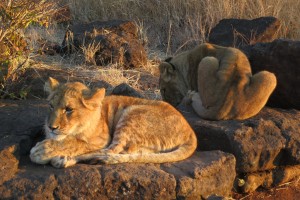DURING A RECENT TRIP to Victoria Falls, Zimbabwe, our group came across Lion Encounter, a local excursion where you pay to walk with lion cubs, an “only-in-Africa” type of experience. According to locals, it is an extremely controversial operation. I thought of my experience swimming with dolphins in Mexico, where I found out later the deleterious effects it has on cetaceans.
Not wanting the same chastisement from my animal rights-devoted mother, I researched online if Lion Encounter was legit. I couldn’t find a thorough, objective breakdown on the controversy. After a short debate, our group decided that we had to find out what it’s really about and if we could reasonably recommend it to others.


